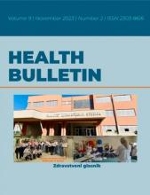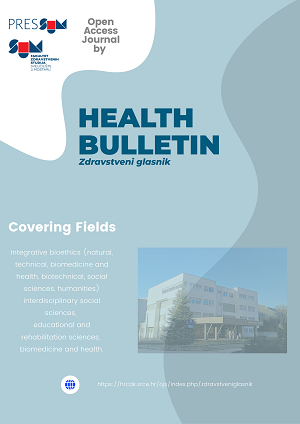HANTAVIRUS INFECTION - EPIDEMIOLOGICAL CHARACTERISTICS IN THE AREA OF THE REPUBLIC OF CROATIA DURING THE COVID-19 PANDEMIC
Ključne riječi:
hantavirus, epidemiology, covid-19, croatiaSažetak
Introduction: Hantaviruses are the causative agents of hemorrhagic fever with renal syndrome (HGBS). People are most often infected by inhaling a contaminated aerosol, but infection can also occur through contaminated food or water. On average, eighteen people fall ill with HGBS per year outside of epidemics. Men between the ages of 20 and 40, especially farmers, soldiers, foresters and hikers, are most often affected. Famous hotspots in Croatia are Lika, Gorski kotar and Medvednica. Objective: To analyze the frequency and epidemiological characteristics of hantavirus infections in the Republic of Croatia during the COVID-19 pandemic. Materials and methods: Data on the incidence of HGBS according to counties, seasonal occurrence, age groups and gender were analyzed, as well as the connection of recommendations for being in nature as part of the suppression of the Covid-19 pandemic to a potential increase in the number of HGBS patients. Retrospective analysis was used to process the data collected at the Croatian Institute of Public Health, and descriptive methods were used to perform statistical analyzes in the Microsoft Excel software system. Results: In the period from 2019 to 2021, there were 547 patients with HGBS, with men suffering more often than women (78.0% vs. 22.0%). The highest activity was recorded in Primorje-Gorski Kotar and Lika-Senj counties from March to August in the age groups of 30 to 39 years. In 2021, 332 patients were reported, which is more than the average, and this can be connected to the more frequent stay of people in nature due to recommendations to reduce the number of patients with the COVID-19 disease. Conclusion: The study of the epidemiological features of hantavirus infections is important for public health because it enables the identification of areas with a higher risk of infection, the recognition of epidemics and the adoption of appropriate control and prevention measures.















